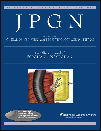Liver Function Test Results Predict Nutritional Status Evaluated by Arm Anthropometric Indicators
ABSTRACT
Objectives:
To compare the anthropometric indicators based on weight and height with the anthropometric indicators based on arm measurements and to predict the anthropometric nutritional status with liver function tests (LFTs) in children with chronic liver disease (CLD).
Patients and Methods:
A cross-sectional study in a referral pediatric hospital enrolled 79 children with CLD (mean age 72.6 ± 61.8 months, 54% female). An independent variable of LFT was used to determine the outcome variable of nutritional status. Anthropometric indicators of height versus age, weight versus height, head circumference versus age, and arm indicators versus age were analyzed with Pearson correlation, the determination coefficient r2, and multiple regression.
Results:
A total of 44.3% of patients studied had growth impairment. The anthropomorphic indicator of weight for height identified malnutrition in 11.4%, compared with 43% identified by mid- to upper arm circumference (MUAC) and 40.5% identified with total arm area. MUAC (P < 0.001), total arm circumference (P < 0.001), arm muscle area (P = 0.009), and arm fat area (P = 0.023) identified more cases of z score less than −2 SD than weight/height. The presence of ascites misled weight-for-height measurements. Conjugated bilirubin and albumin had significant correlations with almost all of the anthropometric indicators. Alkaline phosphatase correlated significantly with all of the arm anthropometric indicators. A regression analysis led to 7 prediction models; the highest prediction of z score less than −2 SD was with triceps skinfold and conjugated bilirubin, albumin, and γ-glutamyltransferase; height-for-age z score less than −2 SD was predicted by measurements of conjugated bilirubin, prothrombin time, and alanine aminotransferase.
Conclusions:
The data presented underline the correlation between the liver damage severity evaluated by LFT and the nutritional status estimated by anthropometric indicators. In our view these observations reflect the close relationship between liver function and the degree of liver damage to growth and current nutritional status.




